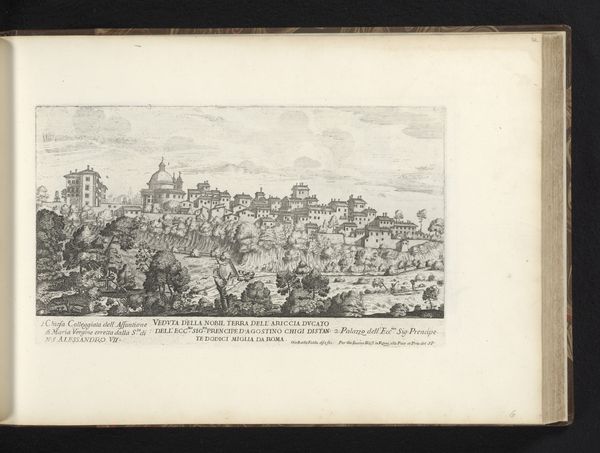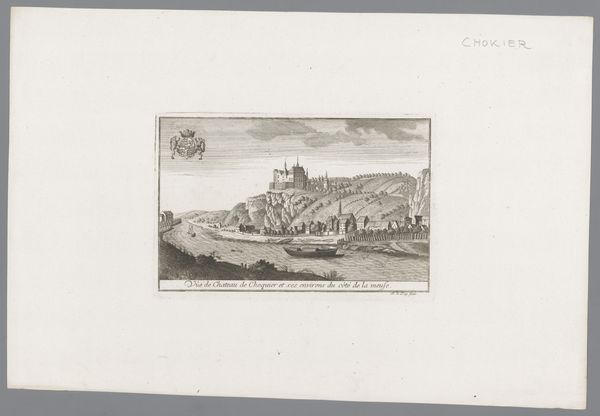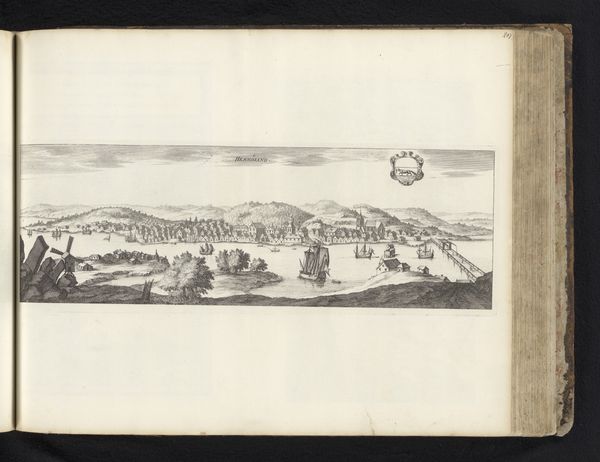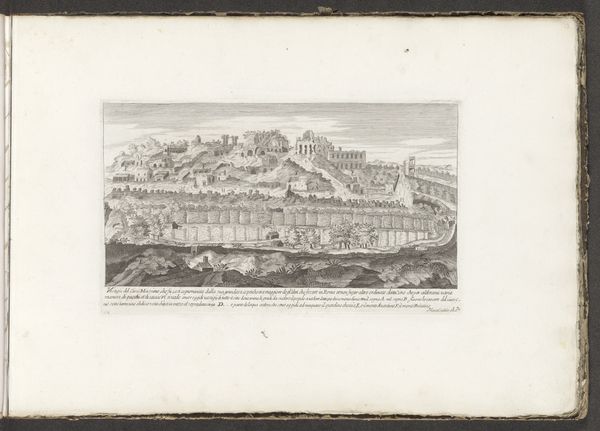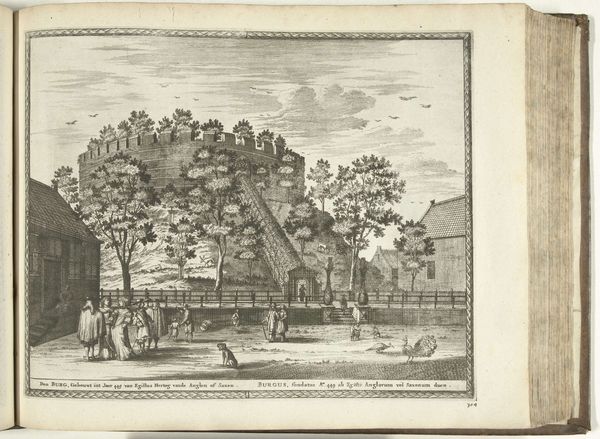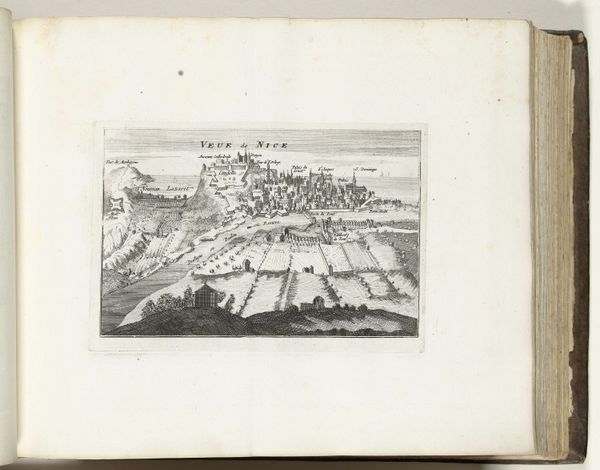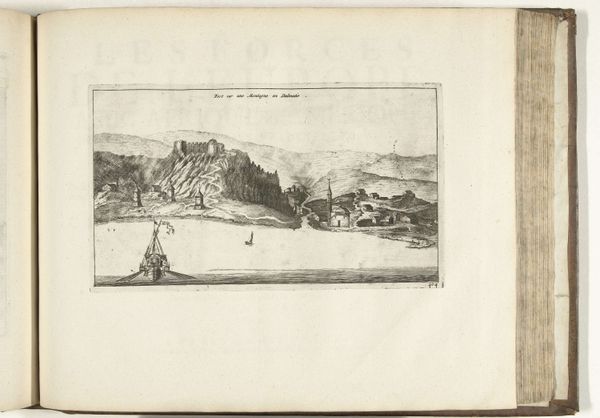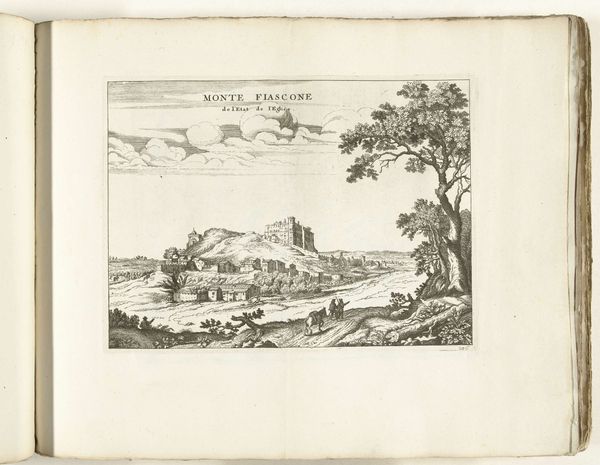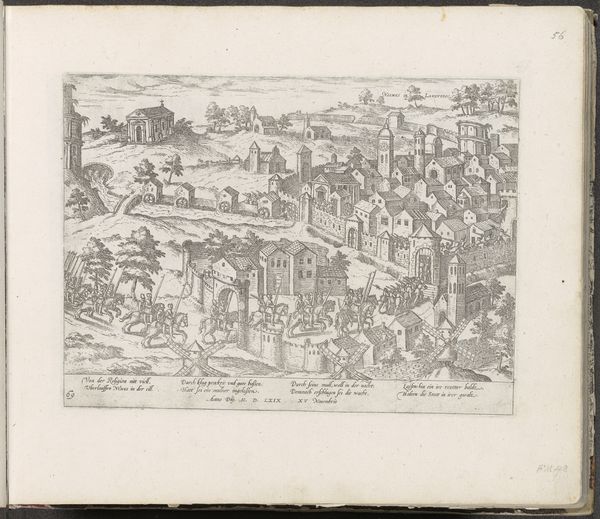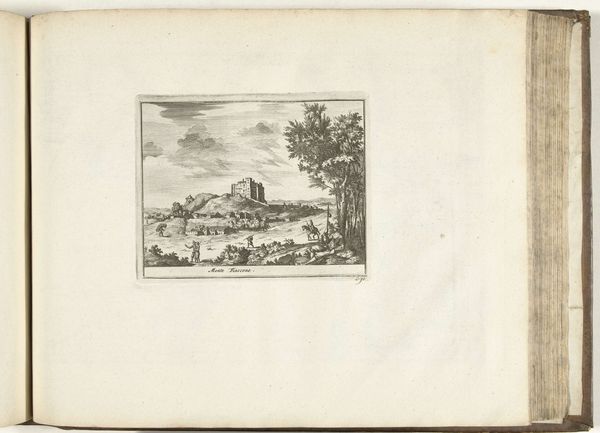
print, engraving
#
baroque
# print
#
landscape
#
cityscape
#
italian-renaissance
#
engraving
Dimensions: height 168 mm, width 285 mm
Copyright: Rijks Museum: Open Domain
Curator: Let's turn our attention to this intricate print, "Gezicht op Castel Gandolfo," created between 1665 and 1667 by Giovanni Battista Falda, now residing at the Rijksmuseum. It's an engraving offering a view of Castel Gandolfo. Editor: Immediately, I'm struck by a sense of order and control, even at a distance. The architecture feels so carefully positioned in the landscape, almost asserting dominion. There's something very composed about it, but also quite formal. Curator: Yes, and it reflects a very specific era. The Baroque period was defined by grandeur, and that architectural dominance you’re noticing certainly reinforces that concept of power. There is a cultural memory being perpetuated of a place deemed important. Editor: Absolutely. We see the elite structures presiding over what could be read as public or common land. And given that it was restored by Pope Alexander VII, that reinforces its ideological weight, almost literally elevated above the everyday. Curator: Precisely. Castel Gandolfo, traditionally a retreat for Popes, isn't merely a physical location; it’s a symbol of papal authority, a refuge and a vantage point. The print emphasizes not just the structure but its integration into the landscape, showing a kind of harmonious relationship between spiritual power and nature. But more importantly, it offers a landscape designed to suggest the Pope's influence reaching all the way back to Rome. Editor: I wonder, though, how the people who actually inhabited the land experienced this 'harmony.' Their lives and labor would be inextricably tied to maintaining this visible representation of power. Curator: An essential point! This vista serves a function; it frames Castel Gandolfo not just as a place but as a statement, designed to inspire both awe and perhaps, a little acquiescence. Even the lines of the print—so meticulous—suggest control, an aesthetic control reflecting actual control. Editor: It also begs the question: whose gaze are we seeing this from? A gaze implicitly sanctioned and empowered. Recognizing these visual codes helps to demystify the narrative of harmony, offering space to center perspectives traditionally left out of the artwork. Curator: Understanding Falda's meticulous rendering within its historical context reminds us how artworks can act as vehicles of cultural memory, and that a visual language endures through landscape and symbol. Editor: And critically interrogating that historical context is how we begin to have a broader discussion about access, power, and the ongoing interpretation of landscapes like Castel Gandolfo.
Comments
No comments
Be the first to comment and join the conversation on the ultimate creative platform.
